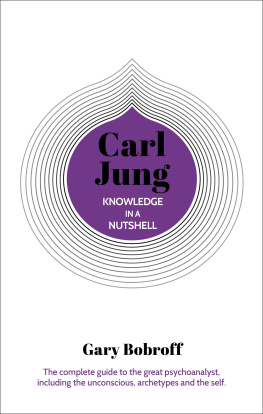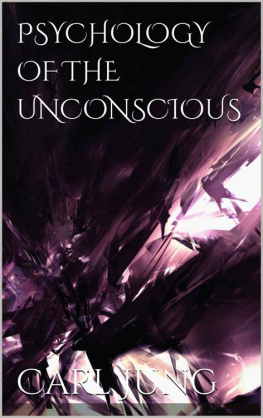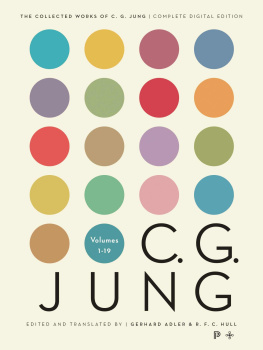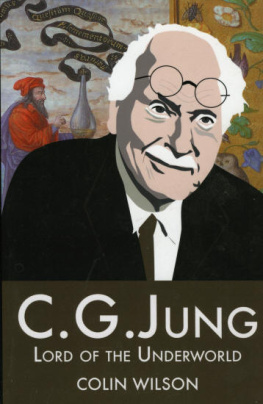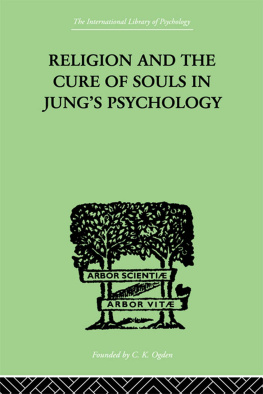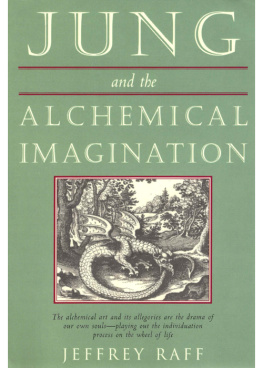This Jesus cant be trusted. He takes people to himself and theyre put in a hole!
Jung says that his intellectual life began with a dream at the age of three. In his dream, he descended into a hole in the ground.
It leads him into a large chamber, a red carpet and a golden throne on which a strange being sits.
Huge like a tree trunk but fleshy
Then I heard my mother
Thats the man-eater!
And I awoke in terror.
Decades later, Jung came across a reference to the motif of cannibalism in the symbolism of the Mass. And only then did the image of the man-eater make sense to him. He realized that the dark Lord Jesus, the Jesuit and the phallus were identical. They represented a dark creative force in nature, the investigation of which he pursued throughout his life.
But it was God who really interested Jung. God tested him out by tempting him to think unutterable sinful thoughts.
I gathered all my courage, as though I were about to leap forthwith into hell-fire, and let the thought come. I saw before me the cathedral, the blue sky. God sits on His golden throne, high above the world and from under the throne an enormous turd falls upon the sparkling new roof, shatters it, and breaks the walls of the cathedral asunder
What a relief! Instead of damnation, Jung felt this vision was an act of grace. He had been shown another side of God altogether, different to the one his father and uncles spoke of in their sermons.
But what about the secret? None of you know anything about that. You dont know that god wants to force me to do wrong, to think abominations in order to experience his grace!
Those around him seemed hypocritical and empty. He brooded on the secret, searching in vain in his fathers library for more information.
Then he would sit on his stone and it would free him from his turmoils. Jung had a strong suspicion there was something eternal in himself too, some Other in him which was like the stone.
It knows the secret. It is the secret, because its thousands of years old.
There were other religious influences on Jung, stemming from his mother and maternal grandfather, Samuel Preiswerk, a respected pastor in Basel, who had contact with a different world altogether the spirit world. Every week he had conversed with his deceased first wife, while his second wife (Jungs grandmother) and his daughter (Jungs mother), listened in.
While your grandpa wrote his sermons, I had to stand behind him to keep the bad spirits away.
Contact with the spirits was not unusual amongst Swiss rural folk. Jung experienced his mother as dark and unpredictable, rooted in deep, invisible ground. She knew the world of the uncanny and she could be frightening and erratic.
These dual religious influences of Swiss Protestantism and pagan spirituality reflected a dualism in Jung himself. He believed he had two different personalities which he named Number 1 and Number 2.
Number 1 was involved in the ordinary, everyday world. He could burst into emotions and seemed childish and undisciplined. Yet he was also ambitious for academic success, studying science and aiming to achieve a civilized, prestigious life style.
The Number 2 personality was much more troublesome, the Other, identified with the stone and the secret of Gods grace. Number 2 carried meaning and seemed to stretch back into history in a mysterious manner.
Jung associated his Number 2 dimension with the uncanny world of his mother. He carved a little man wearing a black frock-coat and boots and placed him, with a stone, in a pencil case that he stashed away in a forbidden place in the attic.
Sometimes I added a little scroll of paper containing a secret message.
In this simple, primitive way, he felt in touch with his Number 2 world.
Years later, Jung recognized that the task of the psychoanalyst was to discover a patients secret.
Jungs struggle to reconcile his Number 1 and Number 2 worlds persisted throughout adolescence. He recalls his twelfth year when he learned what a neurosis is. He shirked school with mysterious fainting spells, a whole bag of tricks that worried his father.


